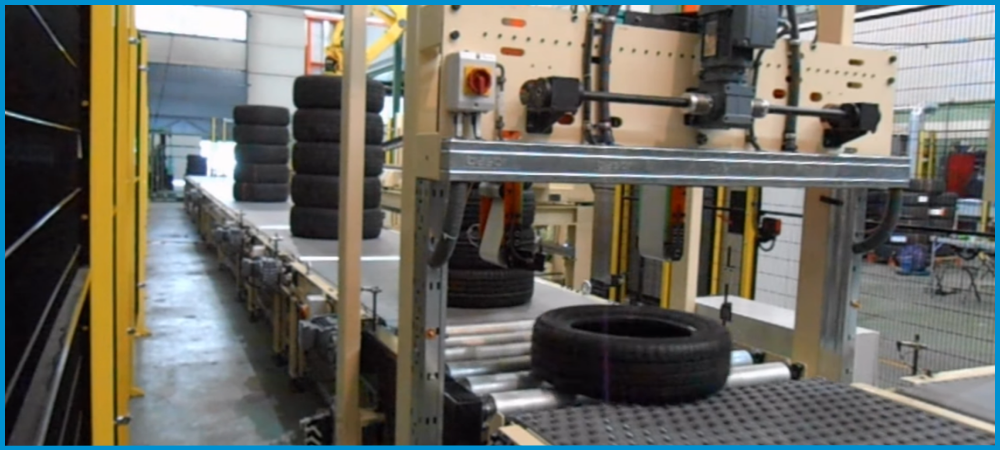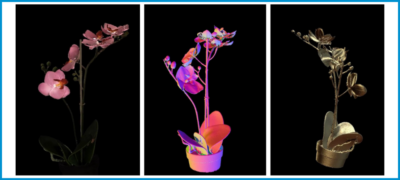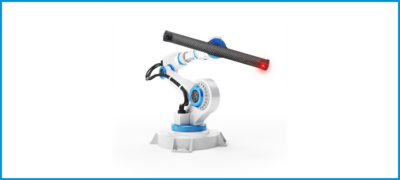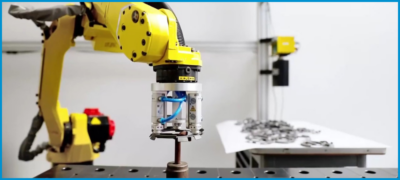
How to achieve great results when 3D scanning black, rubbery, and shiny objects
The accuracy of 3D scanning is susceptible to certain colors and materials. These include black, rubbery, and shiny surfaces. You can still achieve great results, though. We talked to our Delivery Specialist Ivan Zatkuliak to tell you how.
Many customers need to automate applications that require handling objects with challenging surfaces. A robot needs to be equipped with 3D vision to recognize an object and determine its exact position defined by X, Y, and Z coordinates. Only then can it precisely navigate to the object and pick it.
The challenge arises when a 3D vision system needs to scan objects that are difficult to scan – such as black, rubbery, and shiny materials. These types of materials may seriously interfere with the 3D scanning process.
Let’s take an example from the automotive sector – the picking of black rubber tires using a vision-guided robot. This is a very common application yet it requires a robust 3D vision solution to achieve good results.
In this blog article, we will look at why the recognition and picking of black tires is so challenging to do and then we will give you the lowdown on our approach to achieving great results. Let’s get started.
3D scanning of tires for automated depalletization by INGENERSUN, S.L.
Why is 3D scanning of black rubber and glossy materials challenging?
Let us come back to our example with tires. Their surface is black, rubbery, and oftentimes glossy. This may cause difficulties to a 3D vision system for the following reasons:
One problem with very dark or black surfaces is that they lack the contrast necessary for proper 3D scan acquisition. Another fact is that they absorb a large proportion of laser light, i.e. photons, which means that a lot of 3D information gets lost in the scanned material and does not reflect back to the camera. Illuminating the surface with artificial light does not help as that leads to the loss of additional 3D information about the scanned object.
Shiny surfaces are difficult to scan too as they often cause specular reflection. This means that they reflect the light in a single outgoing direction and often outside the camera view. In other cases, they may reflect the laser light between individual parts of the scene and cause interreflections. In both cases, the light distortion interferes with a proper 3D data acquisition process.
Another challenge of picking tires
So far, we have discussed 3D scanning challenges related to certain types of materials. But those are not the only factor that needs to be considered when designing a tire picking application.
Another crucial factor is the scanning volume. This needs to be large enough to scan the tires from sufficient distance. Oftentimes, tires are placed on high pallets and they need to be picked from them and placed somewhere else. In addition, there needs to be enough space provided for the robot to move freely with the grabbed tires between the pallets. Taking all these factors into consideration, the required scanning distance may reach 4 meters or more.
How to 3D scan black tires
We were also dealing with the above challenges for one of our customers from the automotive sector. They approached us with a request to develop an automation solution for picking tires. And we managed to achieve outstanding results. Here is how:
We used our PhoXi 3D Scanner with the largest volume, model XL. The scanner achieved great results thanks to the following features:
- It provides high-quality 3D scans for any type of material and surface, including black, rubbery, and shiny
- It effectively suppresses ambient light
- It cancels noise caused by glossy surfaces thanks to an interreflection filter
- The largest model XL provides a scanning volume of more than 4 meters and if required, even more
- It provides robust performance in challenging industrial environments and lighting conditions
By equipping the robot with our largest model of the PhoXi 3D Scanner, we were able to tackle all the challenges of 3D scanning and automated picking of tires.
Would you like to try out our 3D vision in your own project? If you are not sure whether our technology would be the right solution for your application, do not worry. We can do a free feasibility study to test it. All you need to do is contact us and we can discuss the details.



